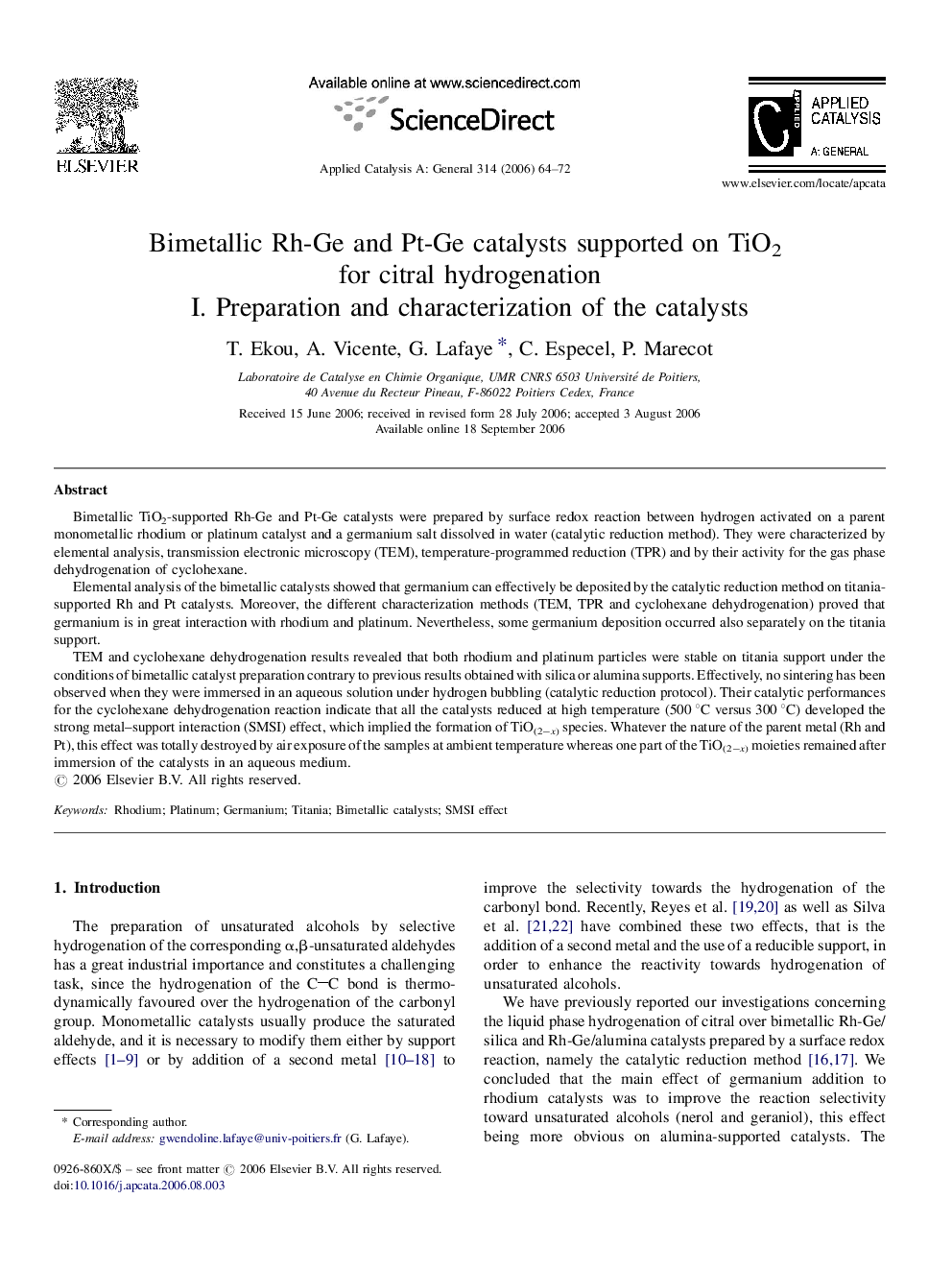| Article ID | Journal | Published Year | Pages | File Type |
|---|---|---|---|---|
| 44512 | Applied Catalysis A: General | 2006 | 9 Pages |
Bimetallic TiO2-supported Rh-Ge and Pt-Ge catalysts were prepared by surface redox reaction between hydrogen activated on a parent monometallic rhodium or platinum catalyst and a germanium salt dissolved in water (catalytic reduction method). They were characterized by elemental analysis, transmission electronic microscopy (TEM), temperature-programmed reduction (TPR) and by their activity for the gas phase dehydrogenation of cyclohexane.Elemental analysis of the bimetallic catalysts showed that germanium can effectively be deposited by the catalytic reduction method on titania-supported Rh and Pt catalysts. Moreover, the different characterization methods (TEM, TPR and cyclohexane dehydrogenation) proved that germanium is in great interaction with rhodium and platinum. Nevertheless, some germanium deposition occurred also separately on the titania support.TEM and cyclohexane dehydrogenation results revealed that both rhodium and platinum particles were stable on titania support under the conditions of bimetallic catalyst preparation contrary to previous results obtained with silica or alumina supports. Effectively, no sintering has been observed when they were immersed in an aqueous solution under hydrogen bubbling (catalytic reduction protocol). Their catalytic performances for the cyclohexane dehydrogenation reaction indicate that all the catalysts reduced at high temperature (500 °C versus 300 °C) developed the strong metal–support interaction (SMSI) effect, which implied the formation of TiO(2−x) species. Whatever the nature of the parent metal (Rh and Pt), this effect was totally destroyed by air exposure of the samples at ambient temperature whereas one part of the TiO(2−x) moieties remained after immersion of the catalysts in an aqueous medium.
